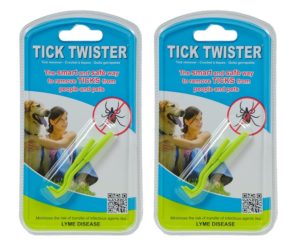If you’ve been in the company of pets for years, especially dogs, you’re aware of the difficulties encountered when they’re afflicted by ticks. If you want to learn more about the life cycle and behavioral pattern of ticks, we’ve created something just for that.
Likely, the headline of this article caught your attention because your dog is or has been affected by ticks, maybe a little too often. Don’t panic. Maintain your composure and let us help you.
Main Ticks Affecting Dogs
There are a smorgasbord of ticks lurking around to feast on your dog’s blood. However, there are 2 main species of ticks that are prone to invade your dog’s personal space. These include the Brown Dog Tick and the Paralysis Tick. For a list of ticks that may affect your dogs, here’s a list we recommend.
- Brown Dog Ticks – Prefers to latch on to dogs. In fact, to demonstrate their love for dogs, they seldom bite humans. While the Brown Dog Tick relish humid climates and complete its life cycle in houses and kennels, it may also adapt
to colder climates around the world. In most cases, they thrive in areas where other ticks find inhospitable. This tick does not pose a threat to humans in terms of transmitting diseases. However, it does bear the organism that is responsible for anaplasmosis and erlichiosis in cats and dogs.
- Paralysis Tick – This tick is only situated on the East Coast of Australia. The Paralysis Tick is dangerous and can prove lethal to domestic animals through a toxin that causes paralysis. Each year, around 80,000 cases of tick toxicosis is treated in Australia.
How Do Ticks Make Dogs Sick?
If your dog is affected by ticks to a certain degree, it will make the canine sick. Here’s how the animal will be affected.
-
Itching and sores
Ticks will make your dog itch. This will cause the animal to scratch which will later result in sores.
-
Anaemia
While latching on to your dog, ticks will suck blood. When your dog is hosting a lot of these parasites, they will lose blood in great quantity. This will later weaken the animal. In some cases, puppies and dogs will die if ticks are left to have their way.
-
Babesia canis
Some dogs develop blood sickness. Since some dogs carry the germ babesia, if ticks feed from dog to dog, they could transfer the germ. Pregnant or breastfeeding dogs can transfer babesia to their pups.
When found in puppies, babesia weakens the blood and cause fever. Ultimately, puppies can die from babesia.
-
Anaplasma/Erlichiosis
This is another germ residing on ticks and transmitted to dogs during feed sessions. Anaplasma/Erlichiosis may cause sickness in dogs, even death.
-
Paralysis
When bitten by the Paralysis Tick, some dogs eventually die, as these ticks release toxins in a dog’s body. The poison transmitted to the dog often affects it in stages. Initially, the dog will lose its appetite for food. Subsequently, the animal will become wonky in the back legs. Approximately 5 days later, he’ll be completely paralysed, unable to move. Because of the tick’s poison, this usually cuts off the dog’s breathing system. If left untreated, the dog could die.
What to DO and NOT do Before Removing Ticks From A Dog
When attempting to remove ticks from your dog, there are some precautionary measures involved.
Do Not:
- try to remove the tick by burning with a match or any other heat source.
- apply fingernail polish to suffocate the tick. Petroleum jelly is equally to be avoided.
- try to pull or twist the tick from the dog’s skin. That’ll only make things more difficult and you’ll only be exposing your dog to more pathogens. Also, the mouthpart of the tick may break off into the tick.
DO:
- ensure to wear a barrier. This might include rubber gloves or whatever you’re comfortable with. It’ll protect you from the tick’s blood.
- make the best use of tweezers, not your fingers.
- ensure to grab the tick with the tweezer closest to the skin.
How to Remove a Tick from a Dog
As you’re well informed about the procedures to take and not to take before removing a tick, here’s the actual process:
- Using a tweezer (a sharp pointed tweezer is recommended), hold on to the tick as close to the dog’s skin as possible. Closest to the skin is usually closest to its mouthpart. This is done to ensure that the mouthpart does not get stuck into the dog and you avoid exposing the dog to organisms that may be expelled if the body of the tick is compressed.

Tick Twister is specially designed to remove ticks. Check the price on Amazon.
Note: A tick tweezer is normally recommended.
- Avoid twisting or jerking the tweezer while you pull out the tick. You should pull up in a straight, steady, and slow motion.
- After pulling out the tick, save it. You can opt to store it (them) in a glass jar or any container that suits you with some isopropyl alcohol. It’s also best to label the container with the tick removal date and where you think the tick latched on to your dog.
- Ensure to clean your dog’s wound and the tweezer with antiseptic. Even though your hands were gloved, the best practice is to wash them nonetheless.
- Watch the bitten area. This is to ensure that your dog does not develop an infection.
- Unless you’re an expert on ticks, it’s expected that you get it tested. This is to ensure that if the tick does carry pathogens that can cause diseases, your dog is able to get the best medical care. Note: There’s usually a fee associated with getting ticks examined.
Recommended Products for Getting Rid of Ticks on Dogs
Below you’ll find a few tick remedy products recommended for preventing and getting rid of ticks. Depending on the history of your dog, you may want to choose one or a combination.
How to Get Rid of Ticks on Dogs
- Oral Medications
There are pills available for dogs, usually rendered once a month, that kills ticks and fleas alike. These oral medications are easily administered and there’s no need to worry about your dog coming in close contact with your children.
- Shampoos
Shampooing should be a regular aspect of a dog’s existence, especially when highly active outdoors. Once your dogs have ticks, you can use medicated shampoos with the right ingredients to kill ticks. Though this method takes a lot of work to protect your animal, it’s cost-effective. Especially during tick season, try to repeat shampooing at least every 2 weeks. Note: Shampooing does not linger as long as oral medications.
- Spot-on Treatments
A spot-on treatment is readily accessible from your veterinarian, favorite pet store, or online. Spot-on medications are very efficient, but be careful which medication is chosen. It’s always shrewd to read labels.
- Tick Dips
Dips are oft diluted in water and applied to the dog’s fur, either with the aid of a sponge or by simply pouring over the animal. Nursing, pregnant pets, or pups (under 4 months) should not be treated with tick dips as the chemical is rather potent.
- Tick Collars
If you want an option that repels ticks from latching on to your dogs, try tick collars. Once the tick collar contacts your dog’s skin, it’ll release the chemicals. While tick collars work as preventatives, they only protect the dog’s neck and head. It’s best to supplement this method with another. When applying the collar, ensure to leave enough room to prevent suffocation and discomfort. Since allergic reactions to collars aren’t uncommon, ensure to maintain vigilance to spot any.
- Tick Sprays

Naturally made home spray for ticks and fleas. Check price on Amazon
This is another dog medication that can be applied topically. While tick sprays kill tick instantly, it also provides residual protection. If you’re using shampoos and tick dips on your dogs, tick sprays can be utilized in-between. Thinking about spending time outdoors or near wooded areas? Tick sprays are effective and immediate for this purpose. However, word of precaution, when using sprays, be careful how applied, and keep away from dog’s face. Best practice includes keeping this product away from other animals in the home.
- Tick Powders
Like tick sprays, tick powders are applied topically to the animal. Not only is this medication effective in killing ticks, but it also repels them. As a precautionary measure, be sure that the powder you’re using is labeled for use on dogs. The age of your animal should also be specified. Tick powders can also be double-hitters, as some do kill fleas (ensure this is highlighted on the labeling).
As tick powders can irritate your dog, ensure to use small amounts and rub into the skin. Keep away from the dog’s lung and ensure it’s not inhaled. During seasons when ticks are rampant and most active, you’ll need to apply this product often – maybe once every week.
If your dog frequents a certain area in your home, tick powder can be applied there. A safe location to apply the powder is where the animal sleeps. Note, some tick powders as this one, can be applied on cats as well.
While you help to keep your dog safe, ensure to take care of you. As ticks do affect humans, exercise precaution to ensure they do not transfer from the dog and unto you.


No Comments